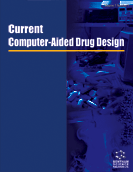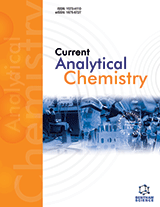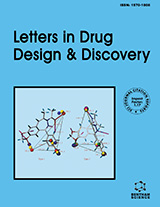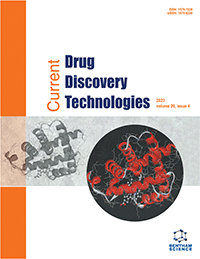Abstract
Background: The accuracy of molecular conformation for Quantitative Structure Activity Relationship (QSAR) studies is an important criteria, and the most favourable bioactive conformer selection is a tough task. Correct ligand alignment as input for 3D-QSAR is an important step that is prone to human biases. Multiple-dimensional QSAR (mQSAR) approach provides a promising alternative to classic 3D-QSAR for drug discovery purposes.
Objective: Obtaining ligand conformations from multiple receptor conformation docking (MRCD) will reduce the margin of error by incorporating the receptor based alignment of ligand conformations. To validate this assumption we performed 6D QSAR studies on reported HIV-1 protease inhibitors using Quasar 6.0. Materials & Method: The ensemble of conformation was obtained by MRCD of ligands in thirteen crystal structures of HIV-1 protease. 6D QSAR model was built using 65 cyclic urea molecules reported as HIV-1 protease inhibitors. Predictive ability of the model was validated using 35 cyclic urea molecules as test set. External predictive ability of the model was evaluated using a set of 24 HIV-1 protease inhibitors having varied structural scaffold. Result: 6D QSAR model obtained showed a reliable cross-validated r2(q2) of 0.899, r2(classic) of 0.908 and yielded a predictive r2 (p2) of 0.527. The ratio of q2/r2 was 0.991 and p2/q2 was 0.586 for external test set. Conclusion: The QSAR results invariably suggest that our approach is suitable for the identification of molecules having HIV-1 protease inhibitory potency. The underlying philosophy combines flexible docking for the identification of the binding modes and 6D QSAR for their quantification.Keywords: AIDS (Acquired Immuno Deficiency Syndrome), HIV (Human Immunodeficiency Virus), MM-GBSA (Molecular Mechanics-Generalized Born Surface Area), MRCD (Multiple Receptor Conformation Docking), PR (Protease), QSAR (Quantitative Structure Activity Relationship).
Graphical Abstract
Current Computer-Aided Drug Design
Title:Integrating Multiple Receptor Conformation Docking and Multi Dimensional QSAR for Enhancing Accuracy of Binding Affinity Prediction
Volume: 13 Issue: 2
Author(s): Vangala Radhika, Hassan A. Jaraf, Sivan S. Kanth and Manga Vijjulatha*
Affiliation:
- Department of Chemistry, Molecular Modeling and Medicinal Chemistry Group, University College of Science, Osmania University, Hyderabad – 500007,India
Keywords: AIDS (Acquired Immuno Deficiency Syndrome), HIV (Human Immunodeficiency Virus), MM-GBSA (Molecular Mechanics-Generalized Born Surface Area), MRCD (Multiple Receptor Conformation Docking), PR (Protease), QSAR (Quantitative Structure Activity Relationship).
Abstract: Background: The accuracy of molecular conformation for Quantitative Structure Activity Relationship (QSAR) studies is an important criteria, and the most favourable bioactive conformer selection is a tough task. Correct ligand alignment as input for 3D-QSAR is an important step that is prone to human biases. Multiple-dimensional QSAR (mQSAR) approach provides a promising alternative to classic 3D-QSAR for drug discovery purposes.
Objective: Obtaining ligand conformations from multiple receptor conformation docking (MRCD) will reduce the margin of error by incorporating the receptor based alignment of ligand conformations. To validate this assumption we performed 6D QSAR studies on reported HIV-1 protease inhibitors using Quasar 6.0. Materials & Method: The ensemble of conformation was obtained by MRCD of ligands in thirteen crystal structures of HIV-1 protease. 6D QSAR model was built using 65 cyclic urea molecules reported as HIV-1 protease inhibitors. Predictive ability of the model was validated using 35 cyclic urea molecules as test set. External predictive ability of the model was evaluated using a set of 24 HIV-1 protease inhibitors having varied structural scaffold. Result: 6D QSAR model obtained showed a reliable cross-validated r2(q2) of 0.899, r2(classic) of 0.908 and yielded a predictive r2 (p2) of 0.527. The ratio of q2/r2 was 0.991 and p2/q2 was 0.586 for external test set. Conclusion: The QSAR results invariably suggest that our approach is suitable for the identification of molecules having HIV-1 protease inhibitory potency. The underlying philosophy combines flexible docking for the identification of the binding modes and 6D QSAR for their quantification.Export Options
About this article
Cite this article as:
Radhika Vangala, Jaraf A. Hassan, Kanth S. Sivan and Vijjulatha Manga*, Integrating Multiple Receptor Conformation Docking and Multi Dimensional QSAR for Enhancing Accuracy of Binding Affinity Prediction, Current Computer-Aided Drug Design 2017; 13 (2) . https://dx.doi.org/10.2174/1573409913666170119115841
| DOI https://dx.doi.org/10.2174/1573409913666170119115841 |
Print ISSN 1573-4099 |
| Publisher Name Bentham Science Publisher |
Online ISSN 1875-6697 |
 37
37 2
2
- Author Guidelines
- Bentham Author Support Services (BASS)
- Graphical Abstracts
- Fabricating and Stating False Information
- Research Misconduct
- Post Publication Discussions and Corrections
- Publishing Ethics and Rectitude
- Increase Visibility of Your Article
- Archiving Policies
- Peer Review Workflow
- Order Your Article Before Print
- Promote Your Article
- Manuscript Transfer Facility
- Editorial Policies
- Allegations from Whistleblowers


























